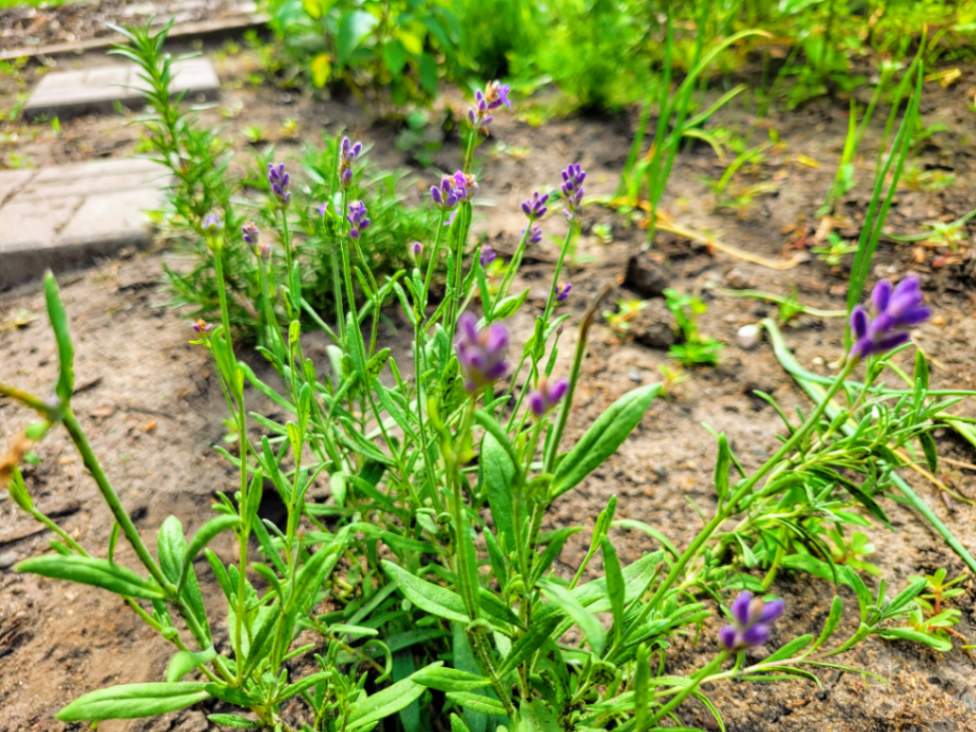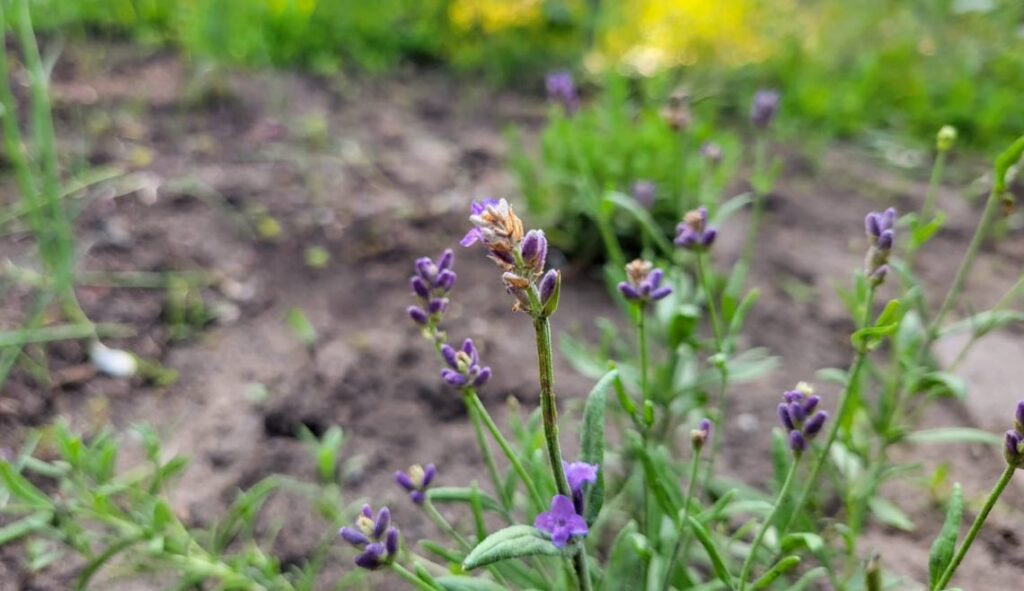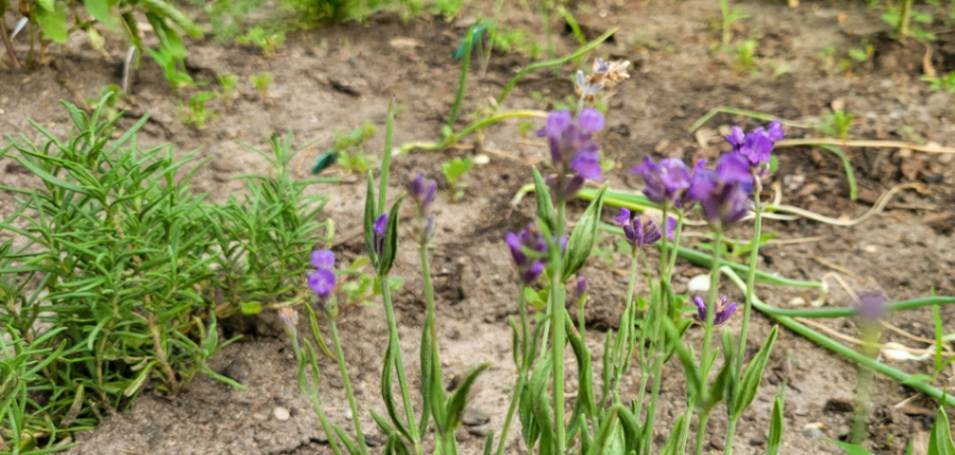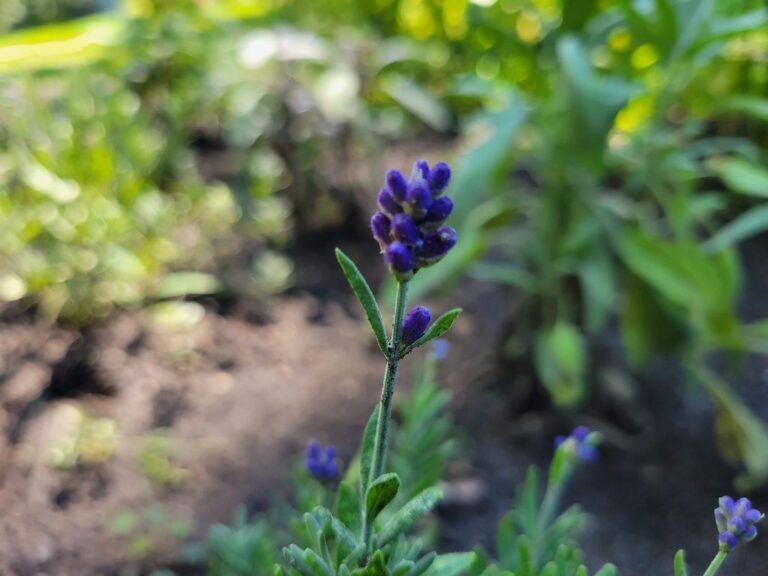This post may contain affiliate links which means I may receive a commission for purchases made through links. I only recommend products that I have personally used. As an Amazon Associate I earn from qualifying purchases. Learn more on my Private Policy page.

Culinary lavender, celebrated for its delicate floral essence, is not a one-size-fits-all herb. With an abundance of varieties, each bringing a unique flavor profile to the table, home culinary gardeners need to know the differences between the various types of lavender.
Culinary Lavender (True Lavender) is the best type of lavender for cooking. Its delicate floral-citrus flavor suits both sweet and savory dishes. Lavandin varieties of lavender have a stronger medicinal taste due to their higher oil content and are better for soaps and perfumes. True Lavender is best for culinary use.
Distinguishing between culinary lavender and lavendin varieties is just as critical. Let’s explore more about the different types of lavender available for cooking.
Table of Contents
8 Culinary Lavender Varieties
There are various types of lavender that you can grow in your own garden for culinary purposes. Amidst the abundant selection, it’s noteworthy that the majority of these culinary lavender varieties belong to the True Lavender family (Lavandula angustifolia).
Purchase lavender plant varieties from Amazon or lavender seeds from SeedsNow

Let’s explore some of the most sought-after varieties of culinary lavender, each offering its unique culinary essence.
- Hidcote (Lavandula angustifolia ‘Hidcote’): This variety boasts deep violet-blue flowers and carries a fruity flavor. It is commonly utilized in sweet treats like lemon bars because its delightful blend of flowery sweetness and a touch of tartness enhances the flavor of this beloved dessert.
- Munstead (Lavandula angustifolia ‘Munstead’): Sporting medium purple flowers, this lavender variety blooms twice during the growing season, providing ample opportunities to incorporate its delicate taste into various recipes.
- Folgate (Lavandula angustifolia ‘Folgate’): This lavender cultivar features light blue buds that turn deep blue to purple when dried. It has a mild flavor profile that is perfect for incorporating into baked goods like cookies or bread.
- Royal Velvet (Lavandula angustifolia ‘Royal Velvet’): With dark purple buds and a sweet scent, this cultivar imparts a mild citrusy aftertaste when used in cooking or baking. It can also work wonders in creamy homemade ice cream.
- Buena Vista (Lavandula angustifolia ‘Buena Vista’): Known for its purple buds and sweet scent, this lavender has a subtly sweet note, making it an excellent addition to desserts like cakes or cookies.
- Melissa (Lavandula angustifolia ‘Melissa’): Characterized by light pink buds and a light peppery flavor, Melissa lavender adds depth to savory dishes such as meats, marinades, or salad dressings.
- Wykoff (Lavandula angustifolia ‘Wykoff’): This lavender cultivar is known for having a fairly well-balanced flavor, making it versatile for both sweet and savory culinary applications.
- Provence (Lavandula x intermedia Provence): As a lavandin variety, Provence lavender stands out with its intense and intricate flavor profile. It is commonly used in the famous herb blend known as Herbes de Provence, which adds a distinctive Mediterranean flair to dishes like roasted vegetables or grilled meats. Unlike the Lavandula angustifolia cultivars of the True Lavender family, Provence lavender is one of the only members of the Lavandin family that is used for cooking.
These are just a few examples of the wide array of culinary lavender varieties available. Each cultivar brings its unique characteristics to the table, allowing you to experiment and create flavorful dishes that showcase the versatility of lavender in cooking.
Understanding Culinary Lavender
Culinary lavender refers to the use of lavender in cooking and baking. Lavender can add a unique floral flavor to various dishes and desserts. However, there are considerations when using lavender in culinary creations.
Purchase lavender plant varieties from Amazon or lavender seeds from SeedsNow
Overcoming Lavender’s Soapy Flavor
One common issue that can arise when cooking with lavender is the presence of a soapy taste in prepared foods. This undesirable flavor can be attributed to two main factors: the wrong cultivar selection or excessive use of lavender.
- Cultivar Selection: Choose strong-flavored, high-quality lavender varieties to ensure the best results. Different types of lavender have varying intensity and aroma profiles. Opt for varieties that translate well into food preparations. Read more about the proper lavender cultivar selection below.
- Excessive Use: Overusing lavender can overpower flavors, causing an unpleasant outcome. Moderation is key for a delightful floral note without overwhelming the dish. A little lavender goes a long way.
Infusing Ingredients with Lavender
In some cases, it may be helpful to infuse other ingredients with lavender rather than directly incorporating the flowers themselves. For example:
- Infuse cream or milk with dried culinary lavender before using it in custards or ice creams.
- Make a simple syrup infused with fresh or dried lavender flowers for use in cocktails or as a sweetener for various beverages.
By infusing ingredients instead of adding whole flowers or buds directly into dishes, you can control the flavor more precisely and reduce the risk of encountering a soapy taste.
Culinary Lavender vs. Lavandin
Culinary lavender (also known as True Lavender) and Lavandin are two distinct types of lavender that offer different flavors and suitability for cooking. While both varieties belong to the same family, they possess unique characteristics that set them apart.
Taste and Suitability for Cooking
Culinary lavender, or True Lavender (Lavandula angustifolia), is widely regarded as the best variety for culinary purposes. It boasts a delicate floral flavor with hints of sweetness and citrus undertones. This gentle taste profile makes it a versatile ingredient in both sweet and savory dishes.
On the other hand, Lavandin (Lavandula x intermedia) possesses a stronger, more robust flavor compared to True Lavender. Its taste is often described as being sharper and slightly medicinal than true lavender. Lavandin varieties have a higher content of essential oils and are commonly used in soaps and perfumes due to their aromatic qualities.
Appearance Differences Between True Lavender & Lavandin
Identifying the two types of lavender can often be done through their visual characteristics:
- Culinary Lavender (True Lavender): Compact, bushy growth with narrow leaves and tightly packed, smaller flowers on elongated spikes.
- Lavandin: Larger, more vigorous growth with broader leaves and longer flower spikes. Its flowers are bigger and more loosely arranged compared to True Lavender.
When deciding between these two varieties for cultivation, it’s important to consider their distinguishing traits. If you primarily intend to use lavender for culinary purposes, True Lavender (Lavandula angustifolia) and its cultivars is your choice.

Purchase lavender plant varieties from Amazon or lavender seeds from SeedsNow
Consumable Parts of Lavender Plant
Lavender plants are not only known for their beautiful flowers but also for their culinary uses. However, it’s important to note that not all parts of the lavender plant are consumable.
Flower Buds: The Delicate Culinary Gems
The flower buds of the lavender plant are the key to its unique flavor and aroma. Dried or fresh, these delicate purple buds can enhance both sweet and savory dishes with a captivating floral essence. From cookies to tea blends, adding lavender flower buds can add a touch of elegance to your cooking.
Stem and Leaves: A Stronger Presence
Lavender stems and leaves are safe for consumption but carry a stronger, more bitter taste compared to the flower buds. In herbal infusions, they can contribute an earthy undertone. However, their robust nature can overpower other flavors if used excessively. For a milder floral infusion, it’s recommended to focus mainly on the flower buds.
Utilizing Long Stems as Decorative Accents
Apart from culinary uses, the long stems of lavender are excellent for decoration. They can add a natural touch of elegance when incorporated into arrangements, bouquets, wreaths, or potpourri sachets. Lavender’s slender stems can lend a rustic charm to your home decor.
Proper Usage of Culinary Lavender
Unlock lavender’s culinary magic by using it judiciously. Add a delicate floral touch to dishes without overwhelming their flavors.
Moderation is Key: “Less is More”
Culinary lavender offers a potent flavor that should be used sparingly to avoid overpowering dishes with its floral notes. Its distinct taste enhances recipes when used in moderation.
Start with small amounts of culinary lavender and gradually increase if needed. This ensures a delicate floral enhancement without overwhelming the dish. Adding more later is easier than fixing an overly perfumed meal.

Enhancing Other Dish Flavors
Culinary lavender’s role is to complement other flavors, not dominate them. It adds depth without stealing the spotlight. Add lavender to your cooking by trying out some of these culinary applications:
- Complementing Fruits: Pair fragrant lavender with fruits to enhance sweetness and add subtle floral notes. Infuse fruit-based recipes with lavender oil or sprinkle dried flowers over fruit salads, especially berries like strawberries and blueberries.
- Enriching Herbs: Lavender blends harmoniously with herbs like rosemary, thyme, and sage. Use fresh or dried lavender leaves in herb rubs for meats or mix into herb-infused oils for dipping bread.
- Accentuating Peppery Dishes: Lavender’s fragrance balances heat in spicy dishes. Add dried lavender flowers to chili or hot sauce recipes for a cool twist.
- Elevating Meats: Marinate chicken with crushed fresh lavender flowers before grilling. Rub dried lavender onto lamb chops for an exceptional flavor.
- Enhancing Vegetables: Add dried lavender flowers to roasted root vegetables or infuse olive oil for drizzling over asparagus or sautéed green beans.
- Delighting Desserts: Infuse cream or milk with fresh lavender for subtly scented bases in ice creams, custards, and panna cottas. Use lavender sugar on sugar cookies or in cake batters for a delightful floral twist that will impress your guests.
Incorporating different types of lavender into your cooking can open up a world of exciting flavor possibilities.
Remember that each type of lavender may have slightly different flavor profiles, so it’s worth exploring various varieties to find the one that best suits your taste preferences.
Purchase lavender plant varieties from Amazon or lavender seeds from SeedsNow
Conclusion: Best Types of Lavender for Cooking
Understanding the different types of lavender is essential for incorporating this herb into your cooking. By exploring culinary lavender varieties and differentiating them from lavandin, you can discover the perfect flavor profiles to elevate your dishes.
To ensure proper usage of culinary lavender, it’s recommended to start with small amounts and gradually increase according to your taste preferences. This way, you can achieve a balanced flavor without overpowering your dish.
Whether you’re baking desserts or preparing savory dishes, incorporating culinary lavender can add a delightful twist to your creations.
Frequently Asked Questions (FAQs)
How much culinary lavender should I use in my recipes?
It is best to start with small amounts and adjust according to taste preferences. Gradually increase until you achieve the desired level of flavor.
Can I use culinary lavender in both sweet and savory dishes?
Culinary lavender can be used in a variety of recipes, including desserts, beverages, salads, marinades, and more. There are certain cultivars that are better suited to savory dishes. These include
What grows well with lavender?
Lavender grows well with other drought-tolerant herbs such as rosemary, sage, thyme, and oregano as they have similar water needs and soil preferences. Broccoli, cabbage, and cauliflower are also good lavender companion plants as lavender repels pests that can harm these vegetables.
Last Updated on 28 April 2024 by Bob Lee

